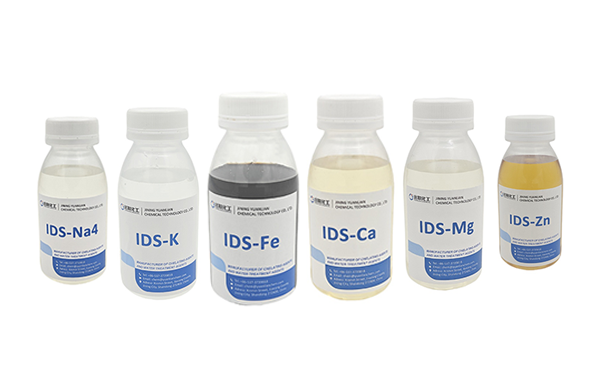
IDS: The Eco-Conscious Stabilizer Revolutionizing Textile Bleaching in Europe
While traditional hydrogen peroxide stabilizers struggle to balance effectiveness with environmental responsibility, a green chemistry solution emerges to transform European textile bleaching processes.
In the European textile industry, where regulatory standards and sustainability concerns drive innovation, hydrogen peroxide remains the bleaching agent of choice for its efficiency and minimal environmental impact. However, the crucial component that ensures optimal performance—the stabilizer—has undergone a significant transformation toward greener alternatives.

Iminodisuccinic acid tetrasodium salt (IDS) has emerged as a groundbreaking solution that delivers exceptional stabilization while meeting the European Union's stringent environmental standards. This innovative chelating agent represents the next generation of textile chemicals that align performance with planetary responsibility.
The European Context: Why Hydrogen Peroxide Stabilization Matters
Hydrogen peroxide decomposition in textile bleaching presents particular challenges for European manufacturers operating under REACH and EU Ecolabel requirements. Uncontrolled decomposition leads to:
-
25-40% higher chemical consumption
-
Inconsistent whiteness levels requiring re-processing
-
Fiber damage reducing product quality and lifespan
-
Increased wastewater treatment costs
Traditional stabilizers containing phosphates or non-biodegradable components face increasing regulatory pressure across European markets. Germany, France, and the Netherlands have implemented particularly strict limitations on persistent synthetic chemicals in textile production.
IDS: Technical Superiority Meets Environmental Compliance
Iminodisuccinic acid tetrasodium salt (CAS No.: 144538-83-0) represents a breakthrough in green chemistry for the textile industry. Its molecular structure enables exceptional metal chelation while maintaining complete biodegradability.
Key Advantages for European Manufacturers:
Exceptional Heavy Metal Chelation
IDS demonstrates binding constants of 8.5-11.5 for Cu²⁺ and Fe³⁺—comparable to conventional chelators like EDTA but without environmental persistence. This effectively prevents catalytic decomposition of hydrogen peroxide by trace metal ions commonly found in European water supplies.
Regulatory Compliance
-
Fully REACH registered
-
Meets EU Ecolabel criteria
-
Phosphate-free formulation
-
Readily biodegradable (>90% in 28 days)
-
No hazardous substance classification under CLP regulation
Broad pH and Temperature Stability
European bleaching processes vary significantly by region and fabric type. IDS maintains stability across the complete pH range (2-14) and at temperatures up to 100°C, making it suitable for:
-
Cold pad-batch processes (Scandinavian wool processors)
-
High-temperature continuous bleaching (Southern European cotton facilities)
-
Alkaline peroxide bleaching (Western European denim manufacturers)
Performance Comparison: IDS vs. Conventional Stabilizers
| Parameter | IDS | Traditional Phosphonates | Silicate-Based |
|---|---|---|---|
| Biodegradability | >90% | <30% | 100% (but forms silica scale) |
| Heavy Metal Chelation | Excellent | Excellent | Moderate |
| pH Stability Range | 2-14 | 3-12 | 9-11.5 |
| Regulatory Status | Fully compliant | Increasing restrictions | Compliant with waste concerns |
| Fiber Protection | Superior | Good | Moderate |
Implementation Guidelines for European Textile Facilities
Dosage Optimization
Based on extensive European field trials, optimal IDS concentrations vary by application:
Cotton Knit Fabric Bleaching:
-
Hydrogen peroxide: 4-8 g/L
-
IDS stabilizer: 0.8-1.5 g/L
-
Temperature: 95-98°C
-
Time: 45-60 minutes
Cold Pad-Batch Processing:
-
Hydrogen peroxide: 18-25 g/L
-
IDS stabilizer: 2-4 g/L
-
Alkali: 12-18 g/L
-
Batching time: 12-24 hours
Cost-Benefit Analysis
While IDS carries a 15-25% price premium versus conventional stabilizers, European manufacturers report:
-
18-32% reduction in hydrogen peroxide consumption
-
Elimination of silica scaling reducing maintenance downtime by 40-60%
-
Wastewater treatment cost reduction of 22-35%
-
Certification advantages for EU Ecolabel and other green credentials
Regulatory Alignment: Meeting EU Standards
The European Chemicals Agency (ECHA) has identified several traditional stabilizers as Substances of Very High Concern (SVHC). IDS provides a compliant alternative with:
-
No endocrine disruption properties
-
Low aquatic toxicity (EC50 >100 mg/L)
-
No bioaccumulation potential
-
Complete mineralization in standard biodegradation tests
Future Developments: The European Perspective
European research initiatives continue to advance peroxide stabilization technology:
-
Low-temperature bleaching applications (60-70°C) for energy reduction
-
Digital dosing systems for precise stabilizer application
-
Combination products integrating stabilizers with other auxiliaries
-
Circular economy approaches recovering and reusing stabilizer components
European textile manufacturers face a complex balancing act: maintaining competitive production while meeting the world's most stringent environmental standards. As one German production manager noted: "We spent years choosing between performance and sustainability—IDS finally delivers both."
With its Presidential Green Chemistry Challenge Award pedigree and proven technical capabilities, IDS represents more than just another chemical product. It embodies the future of European textile manufacturing—where ecological responsibility and industrial efficiency progress together rather than competing.
Yuanlian Chemical specializes in the production of polyaspartic acid (PASP),tetrasodium iminodisuccinate(IDS), GLDA, MGDA etc. with stable quality and excellent quantity!





Contact us